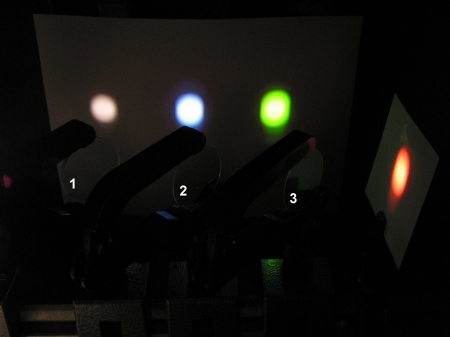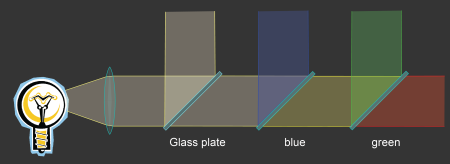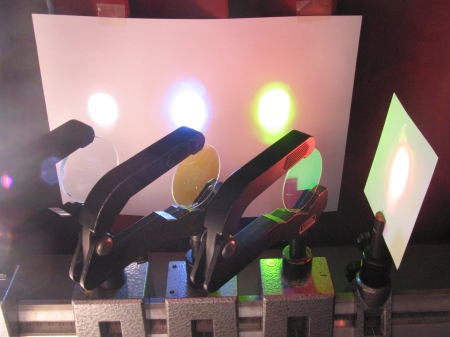1. Light and Radiation
Spectral analysis: Beamsplitters (1/2)
Measuring radiation with optical filters at a number of wavelengths - as shown on the previous pages - requires the same number of partial beams. This can be achieved with optical beamsplitters. A simple glass plate could be used as a beamsplitter: when set at an angle of 45° into the path of rays, around 20% intensity is reflected into a direction vertical to the primary beam. However, this applies to all wavelengths, thus making a glass plate not very efficient as a beamsplitter.

The intensity can be used with much better efficiency with beamsplitters that completely reflect radiation at certain wavelengths and fully transmit radiation outside these wavelengths. Hence, there are no absorption losses as with colour glass filters. Instead, the entire spectrum is split into two spectral ranges below and above a specified wavelength.
These wavelength-selective beamsplitters can be produced with dielectric layers on glass substrates, just like interference filters. The thickness of the dielectric layer determines the wavelength where transmission and reflection are separated. They are therefore called dielectric beamsplitters or dichroic beamsplitters (greek dikhroos: two-coloured).
The blue, green and red partial beams can be further specified with optical filters for a more precise definition of transmitted wavelengths. With this method - however, technically more complex than shown here - the Thematic Mapper aboard the Landsat satellites measures its spectral bands.


